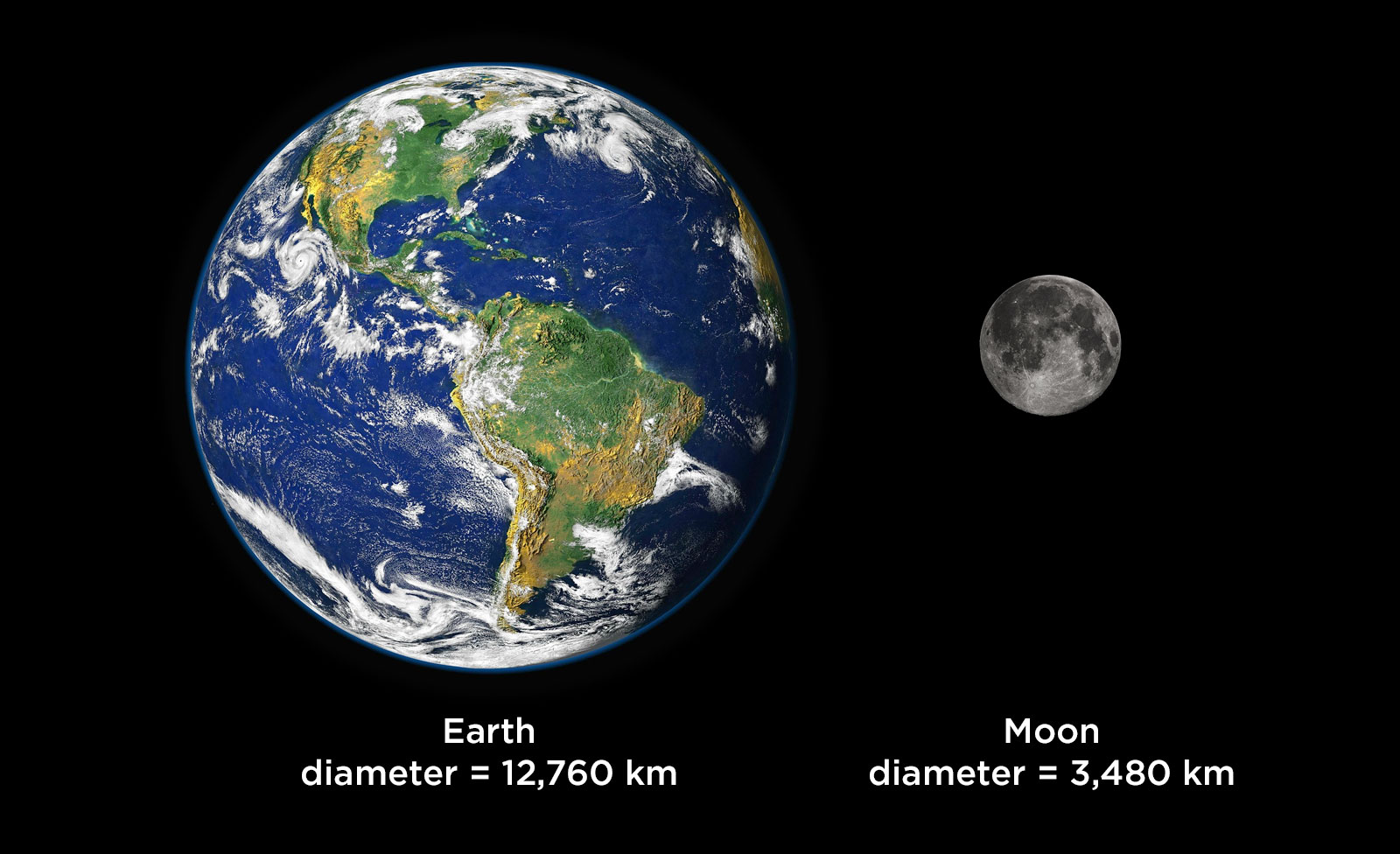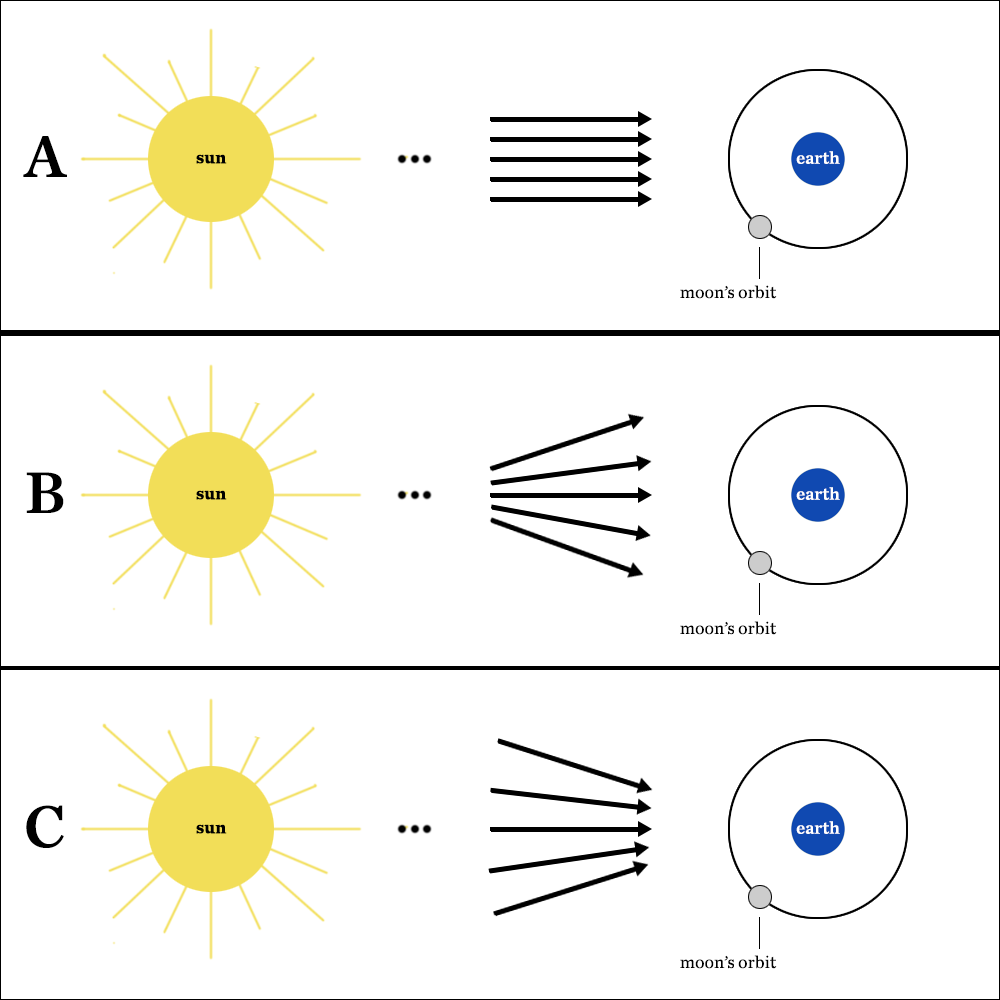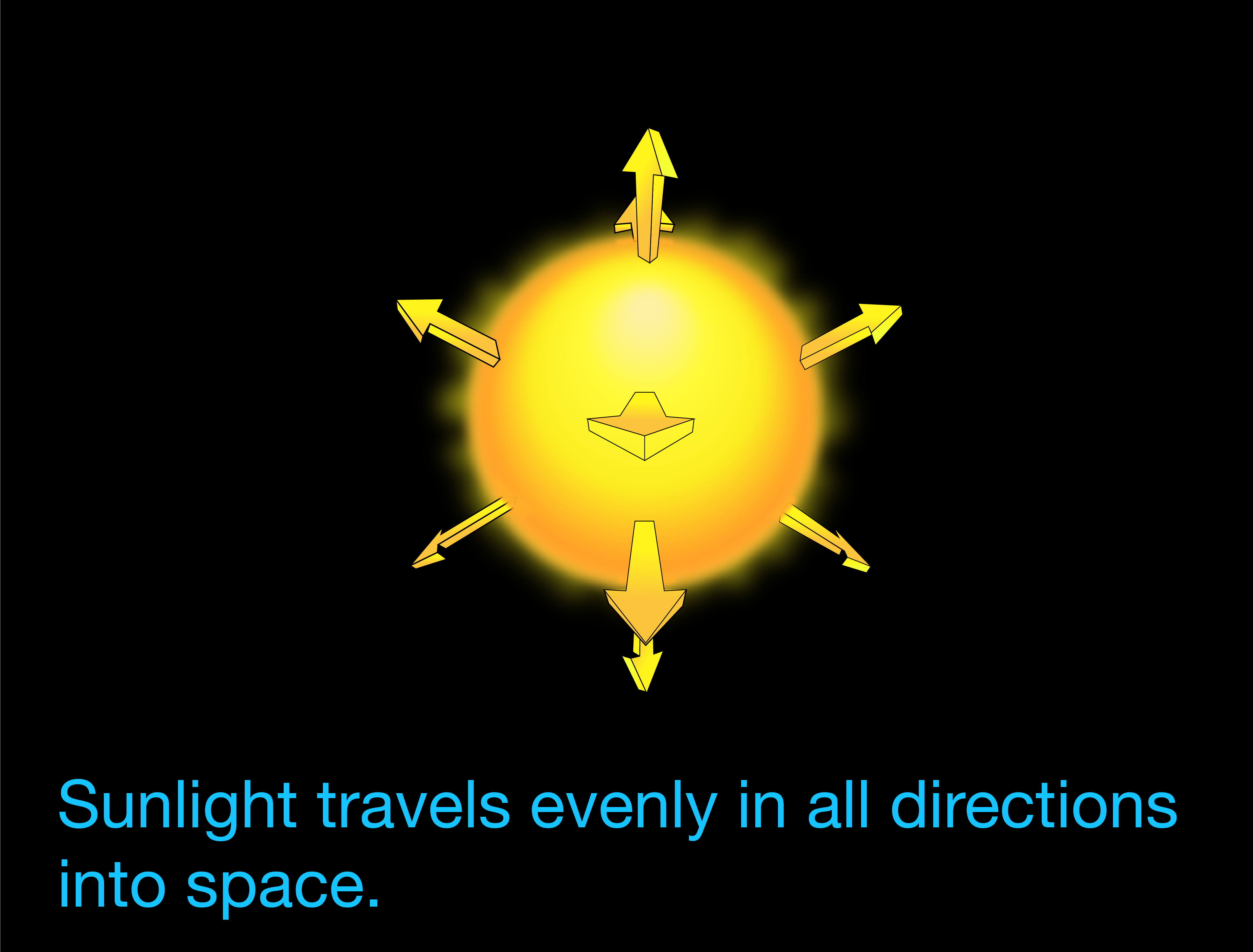The picture below shows how big the Moon is in comparison to Earth. Notice that the Moon’s diameter is a little more than ¼ of Earth’s diameter.

You already know that the Moon orbits Earth, but do you know how far away the Moon is compared to Earth? To investigate, we’ll use round balls to represent the Earth and Moon to scale.
Activity
Earth-Moon System to Scale
Prepare:
Each pair of students should get two balls to represent the approximate sizes of Earth and the Moon to scale. This works best using a 3-inch (7.6 cm) Styrofoam ball for Earth and a 1-inch (2.5 cm) Styrofoam ball for the Moon, which you can put them on popsicle sticks or wood skewers to make them easier to hold. Note: If you don’t have Styrofoam balls, you can use or make any other balls of approximately the same sizes.
Guess the scale:
Step 1: One student should hold Earth and the other should hold the Moon, starting with it right next to Earth.
Step 2: The student with the Moon should slowly move it farther from Earth. Keep going until you and your partner agree that you’ve placed the Moon at its correct scaled distance from Earth.
Step 3: Compare your guess to the guesses of other students in your class.
Check your guess:
The correct answer is that with a 3-inch (7.6 cm) diameter ball for Earth, the Moon should be approximately 7 1/2 feet (2.3 meters) away from Earth.
Record your results:
- My guess for the relative Earth-Moon distance was:
– much smaller than the correct distance
– much larger than the correct distance
– approximately correct - On today’s page in your journal, draw a picture to represent the Earth-Moon system to scale. Then write a couple of sentences about how your guess for the Moon’s distance compared to the correct answer.
Teacher Notes:
- Ideally, provide 3-inch (7.6 cm) and 1-inch (2.5 cm) Styrofoam balls for each pair of students. If you can’t get Styrofoam balls, any similar size balls will do; you could even have students ball up sheets of paper to the appropriate sizes, using tape to hold them at the chosen sizes.
- Note: Using 3-inch and 1-inch balls obviously creates a 3-to-1 ratio for the sizes of your model Earths and Moon. This is close enough for the purposes of this activity, but a more exact ratio is 3.7-to-1.
- If you use Styrofoam, you can place the balls on wood skewers or popsicle sticks to make them easier to hold.
Were you surprised by the correct answer? Most people are. But this is only the beginning of the surprises as we investigate the scale of the universe.
How Does the Sun Compare?
Let's next consider the Sun. The Sun is a little more than 100 times as large as Earth in diameter (actually about 109 times as large). This means that on the same scale we've used for our Styrofoam Earth and Moon models, the Sun would be about eight meters in diameter. Even more amazingly, the Sun's distance from the Earth and Moon on this scale would be almost 900 meters.
Claim-Evidence-Reasoning Activity
Earth-Moon-Sun System to Scale
Have two students hold the Earth and Moon models at the correct scaled distance. Then:
Step 1: Use string or a ribbon to mark out a circle that is 8 meters in diameter; this circle represents the Sun. Be sure to remember that the Sun is spherical, so you should picture this circle sweeping around to make a sphere with the same diameter.
Step 2: Hold the Earth and Moon inside the Sun circle. How do Earth and the Moon compare in size to the Sun?
Step 3: To make this scale correct, your Sun should really be placed about 900 meters from your Earth and Moon models. Discuss where that would place it relative to your school.
Step 4: Based on what you have learned, use evidence and reasoning to support the following claim:
Claim: For practical purposes, we can consider Earth and the Moon to both be the same distance from the Sun.
Teacher Notes: This activity continues with the models of the Earth and Moon on the scale earlier: a 3-inch (7.6 cm) Styrofoam ball for Earth and a 1-inch (2.5 cm) ball for the Moon.
- For step (1) below, you can either do it as a class in your room or, alternatively, go out to a playground or field so there is enough room to break students into groups, with each group making their own Sun circle.
- Steps (2) and (3) are designed to evoke “oh, wow” responses from students. You can decide based on your students and available time whether to make the discussion more formal. You could also choose to ask students to write responses in their journal.
- Step (4) is the first case in this book where we are using the “Claim-Evidence-Reasoning” format to * give students practice in constructing a scientific argument. They are presented with a claim to support, or refute, using evidence from the chapter and logical reasoning. (Please see the Teaching Guide for further explanation of, and rubrics for, the Claim-Evidence-Reasoning activities that you will encounter in this textbook).
- In considering the claim in this activity, students should recognize that because the Moon orbits Earth, at most times the Moon and Earth do not have the exact same distance from the Sun. However, they should be able to support the claim by citing two key pieces of evidence based on what they have learned from the scale model: (1) the difference in distance is very small compared to the Earth-Sun distance and therefore can generally be ignored, and (2) because the Moon orbits Earth, its average distance will be virtually exactly the same as Earth’s.
As you can see, this scale makes the Sun so big and so far away that it’s pretty difficult to work with. Therefore, if we want to view the Sun to scale with Earth and the Moon — or with the rest of our solar system — we’ll need to “jump scales” and make the Sun, Earth, and Moon a lot smaller.
Group Discussion
Rays of Sunlight
Which illustration (A, B, or C) accurately represents the way sunlight reaches the Earth and Moon, and why? Discuss until you are confident of your answer, then open the answer below.

Illustration A is the correct one. The Sun is so far away compared to the Earth and Moon that all the light seems to be coming from the same direction. In other words, all rays of sunlight reaching the Earth-Moon system are essentially parallel.
Here is how you can understand why: The Sun emits sunlight in all directions, and this light spreads out evenly as it travels into space.

However, as you’ve seen in earlier activities, the distance between Earth and the Sun is very large compared to the distance between the Earth and the Moon. (The Earth-Sun distance is about 400 times the Earth-Moon distance.) As a result, only a very small portion of all the rays of sunlight emitted into space actually reach Earth and the Moon, and all these rays are coming from nearly the same direction, which means they are essentially parallel.

